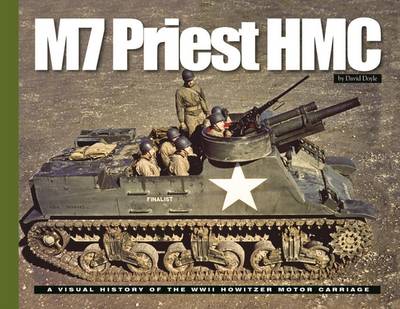Visual History Series EX
2 total works
The M7 Priest family of vehicles was designed to provide armored units with highly mobile organic artillery support. Mechanically, the initial vehicles were based on M3 medium tank components, while later production used M4 Sherman components. The name was derived from the pulpit-like appearance of the anti-aircraft machine gun ring and mount. Between April 1942 and August 1943, American Locomotive Company built 2814 of these self-propelled guns. Joining them in 1944, American Locomotive (ALCO) built a further 500 vehicles, and Federal Machine and Welder Company built 176. Simultaneously, Pressed Steel Car Company was building 826 M7B1 self-propelled guns. The M7B1 was very similar to the late M7s, but were based on M4A3 components. The M7 Priest comes to life in a very big way in this expanded format Visual History title. At 168 pages, this enlarged title features over 190 wartime photos of the famous self-propelled gun, all of them full or half page in size. Covered are all the sub variants of the M7, as well as the differences between each of the manufacturers. A great level of detail is shown in these photos. Details such as the power plants, interior stowage and gun laying equipment are illustrated. Culled from newly sourced private and governmental archives, many of these images are seen here for the very first time. A superb reference for the Italeri or Dragon scale model kits.
Big vehicles can have big problems, and it takes a big wrecker to solve them. When the Sherman tank broke down, one of the vehicles contained in this volume came to the rescue. Based on the Sherman itself, the M32 and M74, and their variants with a variety of powerplants, was the foremost American tank retriever during WWII and Korea. The Commonwealth too created a series of Sherman-based armored recovery vehicles. Both U.S. and Commonwealth versions are covered in this 168-page, hardbound volume, which chronicles the production and field use of these vehicles all over the world throughout their service life, by means of over 200 vintage photographs with detailed, captivating descriptions.

